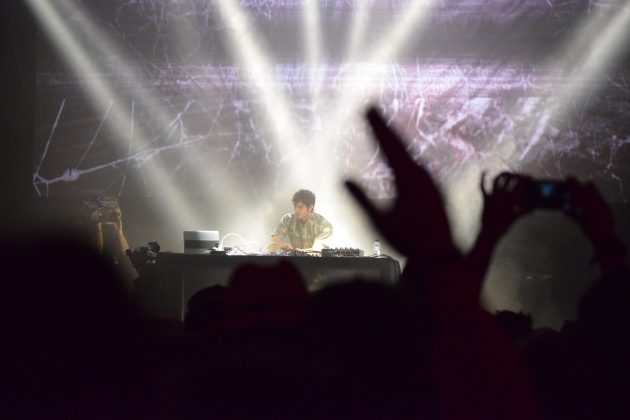
We’re Living in a Nice Moment, Exposing Something Sincere and Unique: A Conversation with Nicola Cruz
By Charlie Bailey
31 October, 2016
Ecuador’s folklore futurist, Nicola Cruz is in the middle of a tour taking in Europe and Latin America. Back in June, at Sonar Barcelona 2016, Sounds and Colours caught a moment to chat about the people and places that inspire him, Latin American electronica’s rise, and what the world can learn from folk culture.
—
What have the reactions to your sound been like from European audiences?
Well, so far so good! It’s always interesting to show my music all around. I think also, we are in an interesting period where people accept this music: the identity with roots and origins.
It seems like roots and cultural identity are strong influences on your work. Where are those roots for you?
Yeah I was born in France, I lived there for three years then I moved back to Ecuador – my parents are Ecuadorian – living in countries like that, you know, in South America you are really exposed to folklore all around: on the radio, when you walk around the city.
Of course, these are my main influences, to tell stories from the place, to tell stories from the coast, or the mountains, and use those types of colours. It just happened naturally.
Was music a big part of your childhood in these places?
Always, especially percussion. I always played percussion, and the world of rhythm, then I moved to sound design and studying acoustics and it just made sense to compose folklore and electronic music.
What kind of records were playing in your house when your were a kid?
[Laughs] I hate this question, cause there’s so many things I could say. Marimba music I guess, music from the Pacific. Latin music, I’ve always been into it, it’s very rhythmic.
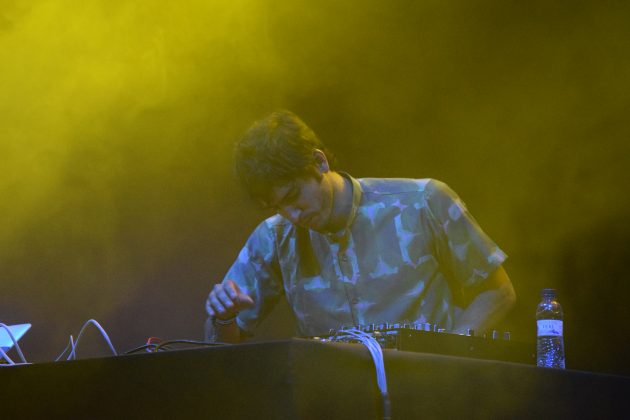
Those rhythmic elements of Latin electronica is what really appealed to me when I discovered this music, especially the connection between rhythm and psychedelia that artists are experimenting with in scenes around Latin America. Why do you think there is such an interest in these particular musical aspects in the continent?
Well, I would say it’s the jungle [laughs]. You know, the jungle in essence is extremely psychedelic. The repetition. The repetition of greens, in the colours of the animals. I don’t live in the jungle myself but having the Amazon there is such an inspiration, having such a huge natural forest across the continent.
Given you don’t live in the forests, what other landscapes inspire you?
Quito, where I live, is really interesting because, first of all, we are at 2,800 metres above sea level and it’s really geographically irregular, you know? You travel around it and you always end up going up and down hills, you have these beautiful landscapes of huge mountains and volcanos.
I was really impressed with your version on the Luzmila Carpio compilation that was released by ZZK. They seem to be doing a great job bringing together artists from around the region. Do you feel a sense of community with other Latin electronica and modern folklore artists when you go abroad to Europe?
Yeah, like, Chancha Via Circuito or El Búho, SidiRum or Barrio Lindo, Matanza. We all know each other, we’ve all played together a couple of times. It’s always nice to meet, wherever we can. The Luzmila thing, Luzmila’s from Bolivia so she has this amazing type of folkloric music – Bolivia’s one of the most representative countries in Andean music – so it was really nice to do this reinterpretation of her work. I felt really honoured.
What do you think has made it possible at this moment in history for this music to travel internationally?
Well, I’m also trying to find that out! [laugh] I feel it’s a moment when people are recognising their origins, their roots. In a way that’s what Prender el Alma [Nicola’s 2015 release] speaks about: having this wider consciousness of where we come from. I feel we’re living in a nice moment, exposing something sincere and unique. I see that not only in South America, but also with folklore all around the world.
The collaboration you did with Huaira for the single from Prender, “Colibria” was really interesting. Who would you love to work with in the future?
There’s lots of people I’d like to work with, for example Quantic. I really like his work. He’s actually from England but he’s a genius how he understands Latin music, being from another place. That’s another example of how music is a universal language. You don’t need to speak French or German, or English or Spanish to communicate through music, it’s this one universal thing.
The music videos for your work are particularly impressive. How important are visuals to you and your work?
Part of conceptualising an album or certain songs is creating this circle: music and visuals. For example in the “Colibria” video I worked with a friend of mine called Camila Coba. He’s a really good director who specialises in photography, which you can see throughout the video, the frames are really special. I remember we thought it through a lot. We did this nice pre-work, then we shot in this jungle an hour away from Quito. It was very special, and now every time I see it I see something new that we did.
Your work seem to be very much representing the highlands, the mountains, like a painting with sound. Are there any film-makers who inspired you with a similar sensibility?
Cinema has always been an influence for me. I can’t think of any names right now, I would say mostly documentaries. [I suggest his music would be perfect for Baraka by Ron Fricke] [Laughs] That would be great, I’m a huge fan of Philip Glass. I don’t know if my music is for that situation. However I do feel my work is cinematic, whenever I begin a song I have this pre-image I would like to introduce sound to, so this visual aspect I talked about is always hand-in-hand with the music.
Finally, away from music, what have you been reading recently that really resonated with you?
I finished reading the Tibetan Book of the Dead last year. It’s a very complex book but it has this approach to death that meant a lot of people had recommended it to me. While I was travelling I decided to start reading it.
It makes me think a lot about the last period, when death is approaching, and how to take it. I feel we’re not nearly there, but for example when I speak with my grandfather I feel he’s closer. I see the relationship between the book and him as natural.
Is it this spiritual component which folklore speaks about that’s missing from everyday life?
I don’t know about missing, because who’s to say what’s missing from someone’s life? More than spirituality, it’s a bigger consciousness that’s needed, like awareness in lots of daily stuff. Where I come from they like to explode natural resources, lately they just want to completely destroy it. This is the kind of awareness that’s missing, that there’s a point where there’s no going back with our effects on the places we live or the people who live there.
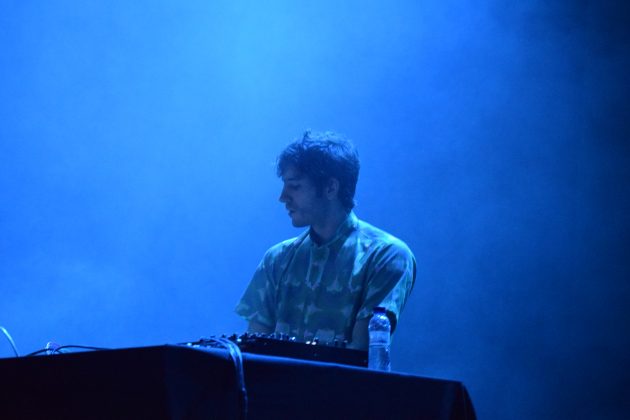
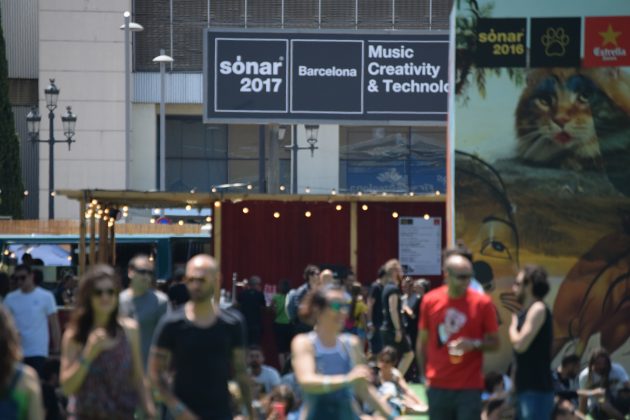
Wrapping Up With A Room Full of Fuzz: Sónar Day 3
By Charlie Bailey
19 June, 2016
Day three of Sónar Barcelona 2016 was a quiet affair for this reporter. With only one artist hailing from Latin America, Saturday was a welcome opportunity to wind down before leaving town early Sunday.
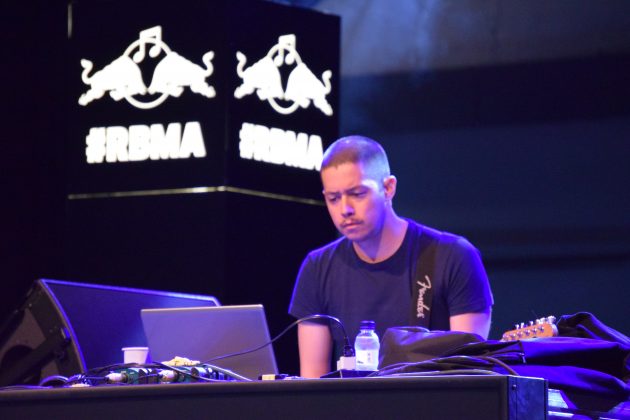
Malard is the musical brainchild of Colombian-born Sebastián De Los Ríos, currently based in Barcelona studying sound art and audio installation. His skills and interest in the artistic side of performance was on full display today in the Redbull-sponsored Dome, where his set was a great mix of cerebral and sensory.
Sending a guitar signal to a laptop and then messing mightily with the sound, Malard is a project that suited the mood of a slightly washed out Saturday crowd perfectly. Ambient and drone influences are clear, as the minimal input from the strings gets stretched out into impossible new shapes made up of white noise and echoes of melody.
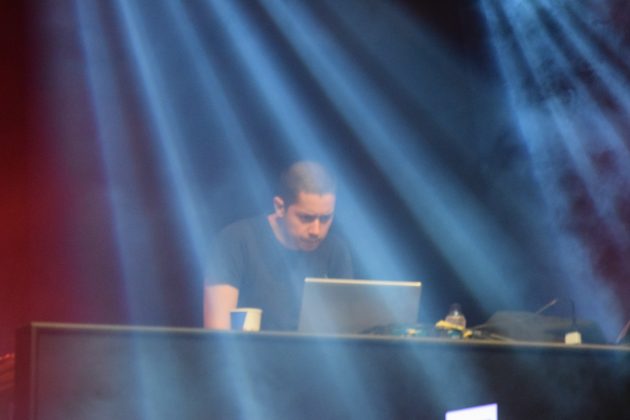
Malard’s stage presence is minimal, in keeping with the musical aesthetic: content to simply lead the sound in organic directions, he layers fuzz and phasing noise in an unstructured and unhurried fashion. There’s strong pulses of bass, rising to fill the hall and resonating somewhere just behind the ears, at the base of where the skull joins the spine.
The departing effect is to leave a very appreciative, if visibly dazed, crowd to applaud and try to process at the close of the set, as the final note fades.
Malard’s performance concludes Sounds and Colours featured coverage of Latin American and Latin influenced artists at Sónar 2016. But, but, buuuuuuut, follow us on Twitter, Facebook, and, as always, keep an eye on the website.
We should have a full-length Nicola Cruz interview conducted at Sónar up soon, as well as photos and video from the last three days of festivities!
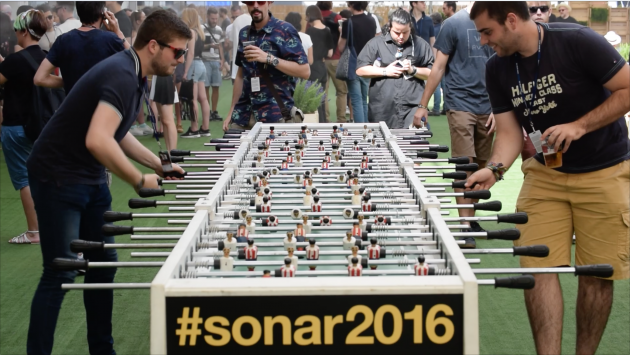
Dreampop, Swamp Psychedelia and the King of Sleaze: Sónar Day 2
By Charlie Bailey
18 June, 2016
Day two of Sónar started early with Argentine solo artists Sobrenadar (Paula Garcia, pictured below). Setting up centre stage in the cavernous hall with only a handful of people looking the worse for yesterday’s festivities, Garcia’s ‘aquatic dreampop’ (according to Wikipedia) soon won over the entire room and brought in a steady flow of interested ears. With only a guitar and a laptop/synth setup, Sobrenadar’s sound is surprisingly huge; like taking a deep dive in a warm sea of percussion and waves of bass.
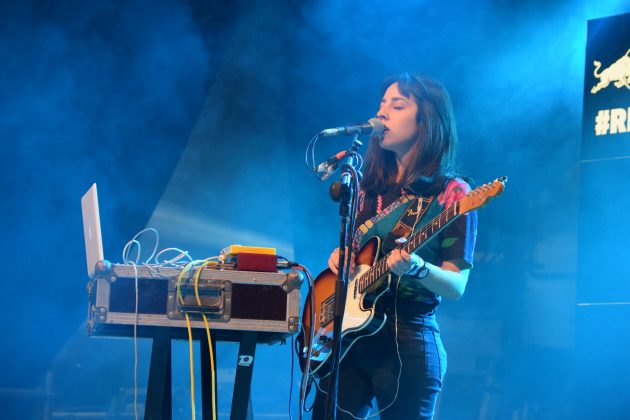
Awwz (Spain, pictured below) saw her 2015 release Bimba garner great reviews in the indie and dance press in Latin America, and made steps out of Spain with tour dates in Mexico. Today she was playing to her home crowd in Barcelona but had to contend with the weather, which turned torrential soon into her set. Playing to a dedicated hardcore of soaking wet dancers in the main arena (and a whole lot more cowardly but dry folks undercover) Awwz showcased her blend of futuristic R&B, storm be damned.
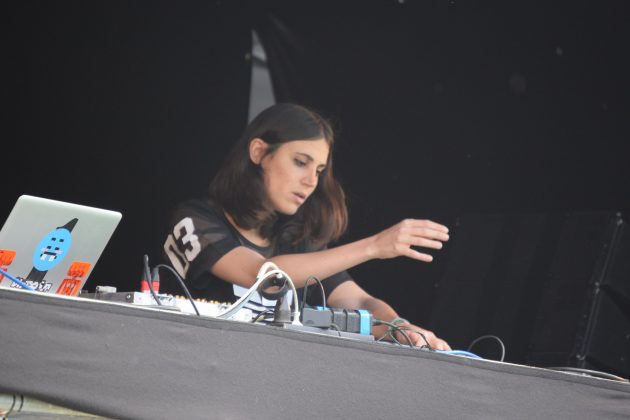
Heavy on the sub-bass and kicks with nice shuffling hi-hats, there was a recurring sigh of synthesiser underpinning her music that added to the edge of melancholy and set it apart from the uptempo and upbeat that can dominate a festival. It’s not dour or gloomy but it has a nice emotional bite that may come as a surprise.
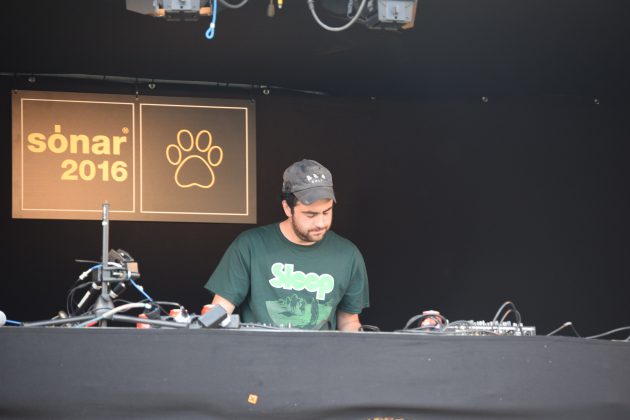
Colombian DJ Las Hermanas (pictured above) was instantly my favourite performer on sight, simply for the band t-shirt from stoner doom band Sleep he took to the decks in. Given the apparel, his set was a totally-appropriate mix of treacle thick bass and dubby psychedelic soul. The selection was abrupt and choppy in places, but the mixing of ambient samples, creepy vocal clips and vintage brass was great, as if Nightmares on Wax were raised in a swamp in the lowlands and fed a steady diet of peyote and classic films.
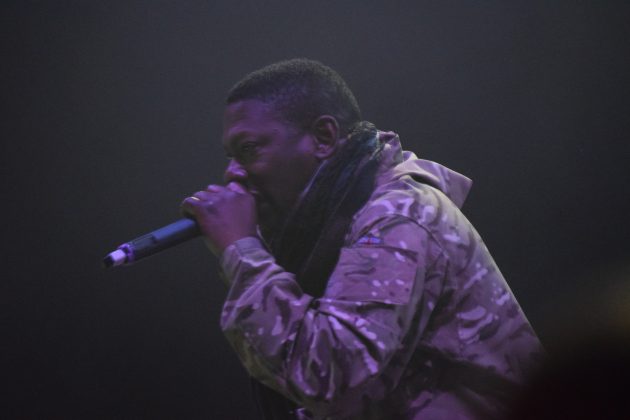
Trying to fit in two legends from either side of the Atlantic, I caught parts of performances from Roots Manuva (UK, pictured above) and Underground Resistance (USA). The former is a laconic rapper from London with a slack-seeming but razor-sharp delivery that makes him the sloppy ninja of British rap. The latter is a seminal Detroit techno outfit that influenced a generation of artists around the world. Both are worth checking out on record and in the flesh if you get the chance.
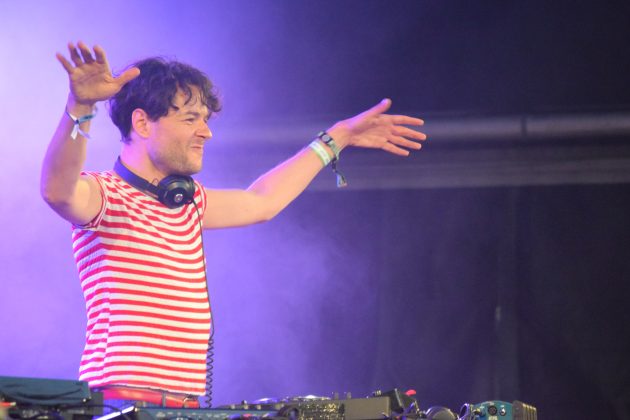
Finally, Chile’s prodigal Germanic son, Matias Aguayo, was there to shake the foundations and to shake his hips in a militant fashion in his bid to be crowned the king of electro-sleaze (in keeping with the royal titles in yesterday’s roundup). Aguayo is energetic to the point of mania, irrepressibly filthy in his manner, and in possession of the finest selection of tunes to touch on everything between two musical/cultural stereotypes: innuendo-laden, lithe bodied Latin, and heavy-duty, fist-pounding teutonic techno stomp.
Thankfully the hour is late, and the crowd are in the mood to be seduced. The set starts slow with some simple pop games, breaking the ice before the evening descends into a tropical fever. In my notes for the set, I’ve written ‘just relentless’ (that’s a positive). Throughout Aguayo urges the crowd on, singing dirty, and chanting robotic filth into a vocoder’d microphone over rolling tech drums and 303 filter abuse.
There are enough varied breaks and hints at Aguayo’s continued fascination with pop to stop it being a one note display. Some mutated cumbia breaks out at various points, and a big vocal bridge sets up a wall of crazed snares hinting at the upcoming drop that grows and grows, until the wave crashes down and the crowd explodes into a frenzy of movement.
With that, its time to fix up, shower down, and bid farewell to another day. You can get in touch during the third and final instalment of this year’s festival via Twitter @MumblingMusing.
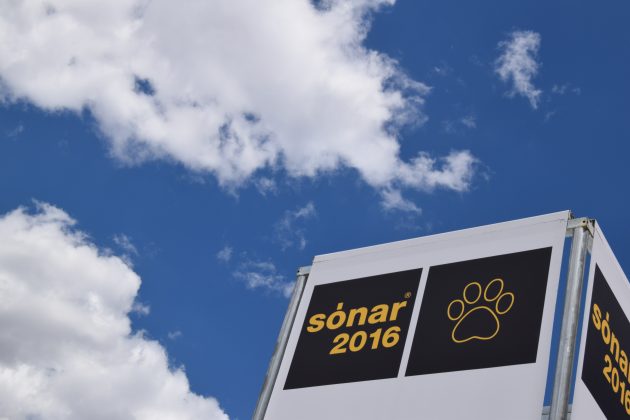
Melting Landscapes, Puerto Rican Princes and Mad Professors: Sónar Day 1
By Charlie Bailey
17 June, 2016
Spending a day of sunshine and blue skies dodging wonky dancers and ‘serious music types’ is a strange experience at a festival. Everyone attending Sónar seems to be there for the music but the casual bacchanalia is clearly present in the sunburn and too-big grins of some attendees. Getting photos and navigating crowds in a mix like this is a matter of not stepping on the toes of chin-strokers, and smiling wider than anyone sane if you happen to bump into the ones too far gone. Thankfully some of our featured artists were there, as well as some honourable mentions, and duty obviously kept this reporter on the straight and narrow.
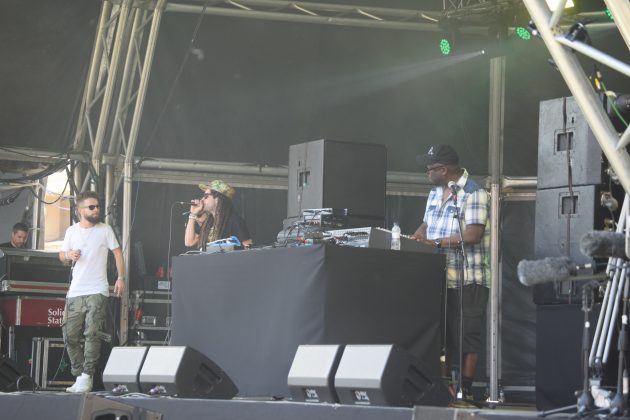
The first day started in a reassuringly righteous manner thanks to the the ever brilliant Mad Professor and the Spanish Dub Invasion. The veteran dub-reggae producer had three fine local MCs on hand to help fight off the vampires of Babylon, backed up by a none-finer selection of riddims. The set was largely heavily-versioned reggae standards, featuring crowd-pleasers from Bob Marley and Max Romeo, so that while not very far out by the good Professor’s standards, it got the crowd skanking and singing early.
Nicola Cruz drew a good crowd to the indoor stage, for a set that pushed some hefty doses of synth along with the ambient soundscaping he’s perhaps better known for. Combined with a tremendous projection graphic of morphing rorschach inkblots and melting landscapes, Cruz’s set was a reminder of how much space there is to get lost in the rhythms and interlocking, puzzle-piece melodies that go into the music; guitars lurch and shimmer in and out of the beat but always land when and where they should, and shakers keep a subtler and slipperier time than militant kick drums do.
There’s plenty of shuffling in the audience as most respond bodily, even if their brains are still trying to process, and the set draws more people in as it gets heavier. More synth leads and bass lines get introduced, and leavened a little with folk instrumentation at the bridges and builds. It’s a testament to the strength of the material and to Cruz’s performance that he can take the crowd to some quite unfamiliar territories and still keep them together throughout.
France’s Acid Arab are a great DJ duo pulling the best and most hypnotic elements of acid techno and Mediterranean Arabic music together into a wonderful stew of finger-cymbals, 303 bass and ululation-inspiring build-ups and breakdowns.

Lady Leshurr (UK; pictured above) brought the house down with a short set of her ‘Queen’s Speech’ material, added some grime to Sister Nancy’s classic “Bam Bam” and generally performed like she owned the place. Long live the Queen.
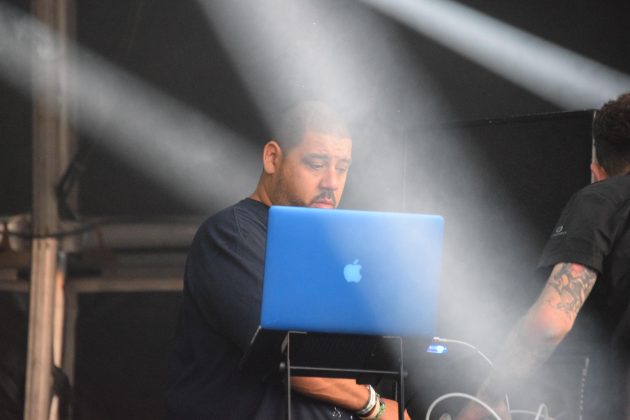
Brooklyn house’s Puerto Rican prince, the Master at Work, Kenny Dope closed proceedings on the shortened first day (the following days go until the early morning) with a set that laid down a mark for the days to follow. Showing off a selection that drew on classic garage and hard house, polished modern beats and a mix that kept the whole crowd moving. It may have been the late hour and the last show-of-the-day feeling but it says something about a DJ who can bring together silver-haired disco mums, undercut sporting tech-heads, the summer-print fashion mafia, and the crustiest dreads.
Bring on day two, fingers crossed on the sun and blue sky…
All photos by Charlie Bailey.

















